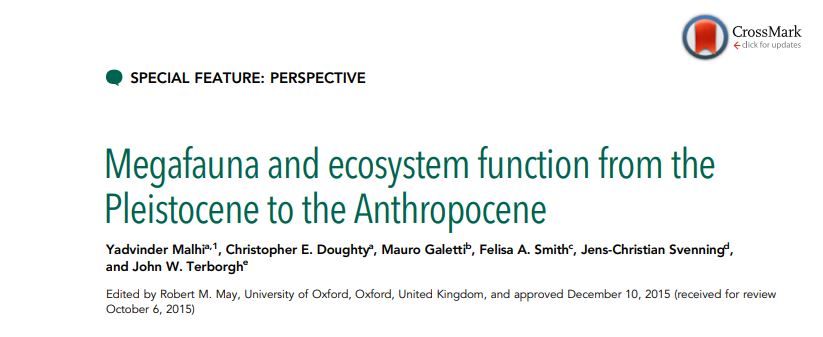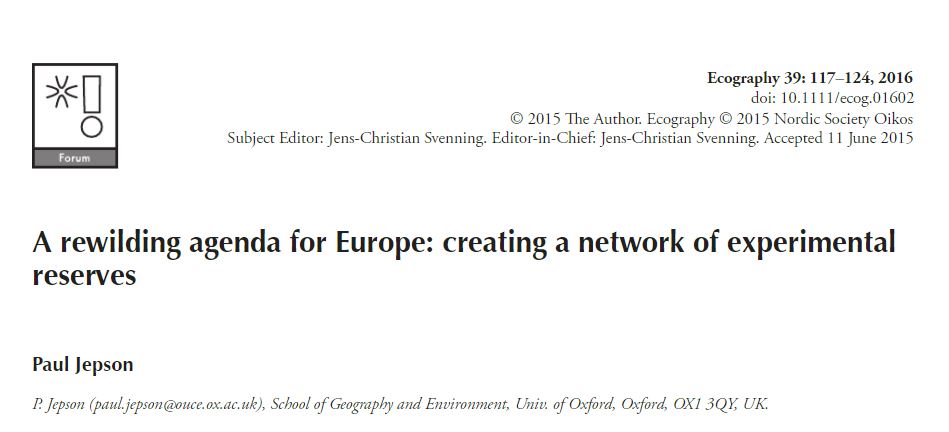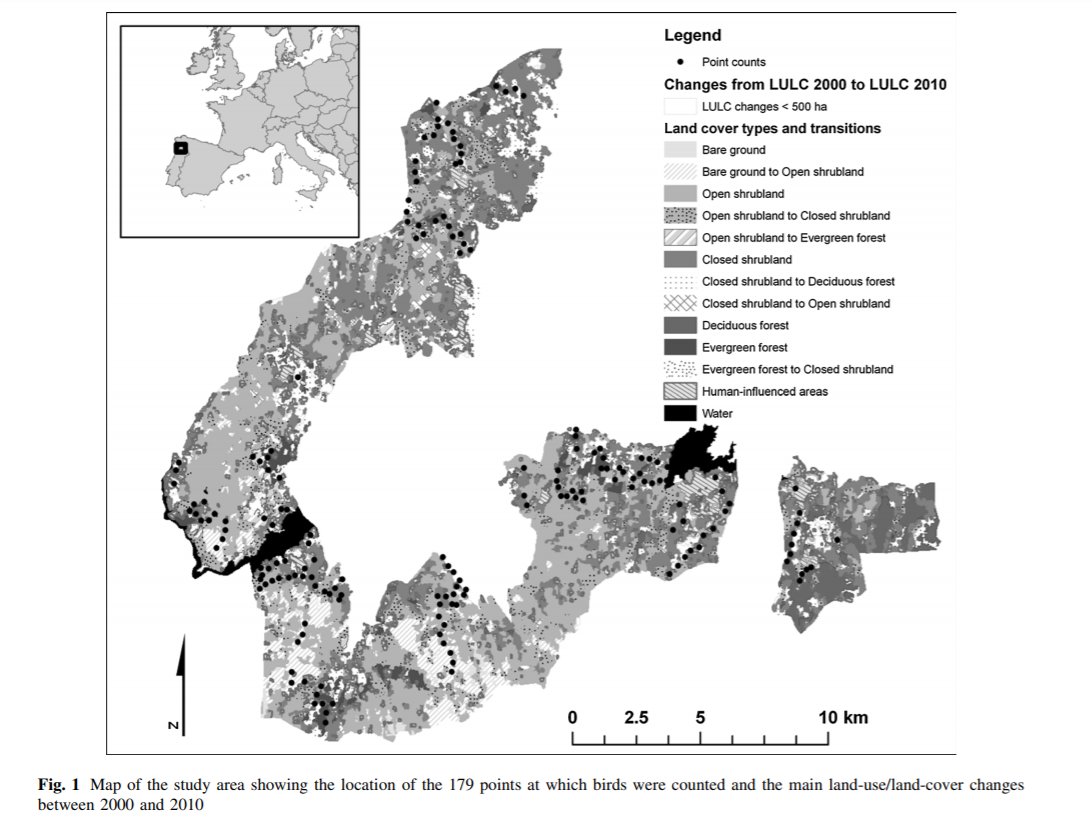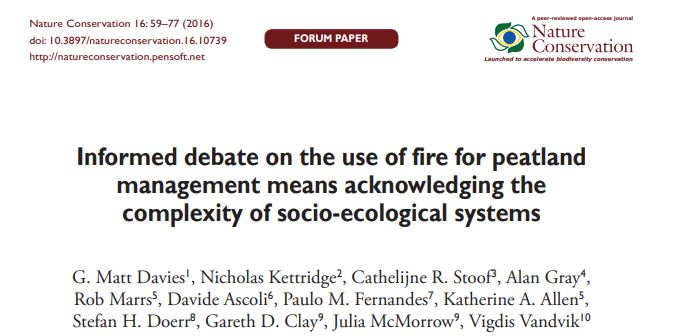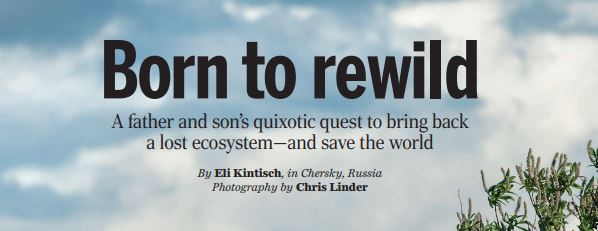
1/ This week we end with the future directions of conservation paper by Jozef Keulartz (2016). #rewilding has varied forms, which rather than competing, can be complementary. Read this #rewildingscience thread and join in the discussion 

2/ Which historical baseline is used as a reference state is one of the central debates in #rewilding. This can depend on cultural and ecological context of where rewilding takes place….
3/ It has been argued that historic baselines are irrelevant due to current anthropogenic drivers e.g. climate change making it difficult to recreate historical ecosystems. There are two thoughts; to abandon history entirely, or to move the baseline to a more distant past
4/ In places like the US, Pleistocene rewilding,which can include emphasis on top-down regulation through predator reintroduction is the route that is sometimes taken
5/ Whereas Europe has taken the Holocene approach, combining extensive farming-style management with large herbivore grazing – driving ecosystems through vegetation change
6/ Using some baselines may be counterproductive for realistic and lasting restoration. #rewilding by restoring ecosystem processes rather than snapshots of ecological history, may be the better route when considering the future effects of climate change
7/ “It comes down to maintaining or repairing key ecosystem services”. This can be optimistic, with viewing nature as a bundle of services which can be reinstated, giving a more positive outlook on how we view the world
8/ The author writes, however, that there doesn’t need to be a complete abandonment of history. Pleistocene rewilders have looked to megafauna proxies like camels, cheetahs, and elephants to replace lost species that were important to ecosystem integrity
9/ There is the issue that variation will make the proxies act like invasive species, leading to novel ecosystems and unknown damages. For a more in-depth discussion on this please refer to Donlan et al (2006) (link to the paper at end of this thread)
10/ In Europe, the baseline tends towards the mid-Holocene (~7000ya) with a focus on introducing large herbivores. This stresses the role of vegetation and has challenged the idea of a landscape of closed canopy forest with one of shifting mosaic pastures and trees
11/ Like the American #rewilding efforts this has faced controversy with de-domestication bringing in concerns from animal ethicists. This generated a discussion about what is wild and how much control we should have over ‘wild’ populations of herbivores in rewilded sites
12/ It is clear, the author concludes that there are growing uncertainties in conservation policies/practices on both sides of the Atlantic. However there is no reason why we need to opt for just one of these alternatives...
13/ ...Instead we should be free to move between and within #rewilding practices based on (a)biotic conditions and socio-cultural context of the area
14/ He lists three points; 1) that there is no real conflict between top-down regulation through large carnivores (US) and bottom-up regulation through large herbivores (Europe). Both are a part of food webs and have a major impact on vegetational development
15/ 2) The positions between #rewilders and new conservationists isn’t so different. Whilst introduction of proxies can result in novel-ecosystems, these can include change, wilderness, and evolutionary processes…
16/ On the other hand, historic ecosystems may now have lost their wildness because they require more intensive management and are now being replaced by novel ecosystems
17/ 3) That the whole discussion about novel ecosystems often changes. Sometimes they are viewed as the only option left, whilst sometimes they are treated as additions to historic ecosystems i.e. we should conserve and restore historic systems whilst also embracing hybrid ones
18/ He concludes by saying that there are enough good reasons as to why we shouldn’t narrow down our conservation options to one approach and instead broaden our scope to view them as complementary rather than mutually exclusive
19/ It is also an important question to ask whether #rewilding reinforces the line between humans and nature, representing a challenge for traditional cultural-historical ecosystems
20/ We hope you’ve enjoyed this thread. To read more you can access the full paper here:
researchgate.net/publication/30…
The following papers may also be of interest...
researchgate.net/publication/30…
The following papers may also be of interest...
Donlan et al (2006) - A discussion and debate on Pleistocene rewilding researchgate.net/publication/67…
Root-Bernstein & Svenning (2016) – The use of camelids in #rewilding. Can they assist in habitat restoration and conservation?
researchgate.net/publication/29…
Root-Bernstein & Svenning (2016) – The use of camelids in #rewilding. Can they assist in habitat restoration and conservation?
researchgate.net/publication/29…
@threadreaderapp unroll
• • •
Missing some Tweet in this thread? You can try to
force a refresh

